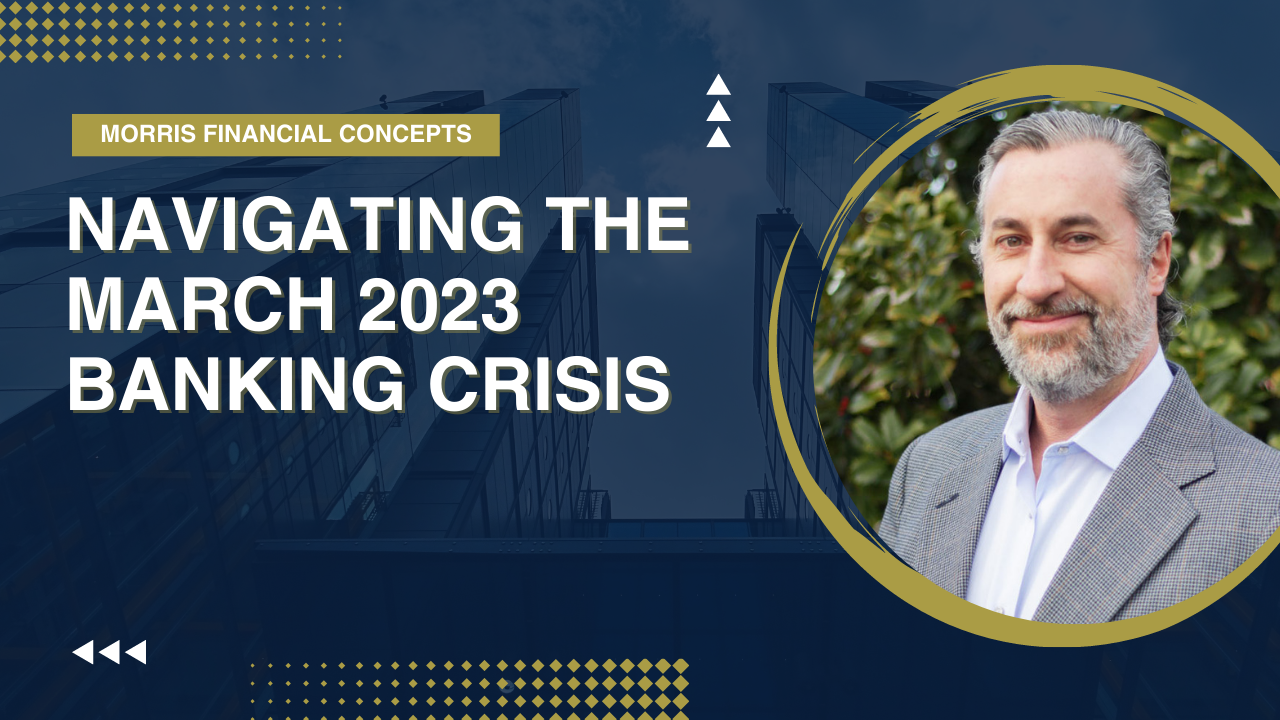Understanding the Factors Behind the Q1 2023 Market Swings
In this video interview, we discuss the recent stock market swings with Bart Valley from Morris Financial Concepts. Bart provides valuable insights into the factors contributing to the market’s change and compares it to past rebounds. He also discusses the relationship between the economy and the market, market sentiment, cognitive biases, and offers advice for individual investors on positioning themselves in the current market.
Factors Contributing to the Market Swing
Bart acknowledges that the market has gained some traction recently, although it has experienced minor fluctuations. He highlights that the market has been performing reasonably well since the lows in mid-October, leading some to refer to it as a stock market bounce or the beginning of a recovery. However, he emphasizes the importance of considering the challenging year investors faced before these market swings.
Comparing to Past Rebounds
Bart mentions that the stock market drop during the previous year was accompanied by an unusual decline in the bond market, which typically serves as a safety component in portfolios. The global pandemic, persistent inflation, and the Federal Reserve’s efforts to address inflation through interest rate hikes significantly impacted the markets negatively. Although there has been some recovery, uncertainties still persist, including the potential debt ceiling crisis and political brinkmanship.
Market Sentiment and Uncertainty
Host, Richie Guerzon inquires about the relationship between market sentiment and uncertainty. Bart explains that investors and the market dislike uncertainty. While sentiment has been improving, the uncertainties surrounding the economy still persist. However, he notes that market sentiment and the economy are not the same thing. The market is more like a movie, incorporating both current and future events, whereas the economy represents the present snapshot. Hence, the market can exhibit positive momentum even in the presence of ongoing economic challenges.
Sustainability of the Rebound
Richie asks Bart about the indicators suggesting the sustainability of the current rebound. Bart explains that the long-term growth of underlying companies primarily drives the market. When investing in the market, individuals are essentially investing in the growth potential of these companies over an extended period. In the short run, market movements are influenced by news, surprises, and investor reactions to news. Bart characterizes the recent market swing as a “Goldilocks market,” where good news was once perceived as bad news due to concerns of overheating, but now there is more encouraging news regarding moderating inflation.
Labor Market and Monetary Policy
Bart elaborates on the concept of the labor market running hot, acknowledging that it may initially seem counterintuitive. However, strong employment figures and new job creation indicate positive trends in the labor market. He explains that during efforts to cool down the economy and control inflation, weakness in the labor market can be a sign of success. By reducing the threat of a wage-price spiral, these measures contribute to a more stable economic environment. Bart also emphasizes the Federal Reserve’s focus on combating inflation as its top priority, even if it means risking a short-term recession.
Government Policy and Central Bank Actions
Bart discusses the impact of government policy and central bank actions on the market, highlighting that they are important factors but not the sole drivers of market fluctuations. Fiscal policy and monetary policy are two components among many that influence the markets. He compares them to ingredients mixed in cake batter, where it becomes difficult to distinguish the impact of each individual factor. While they play a role in market declines and recoveries, Bart emphasizes the significance of taking a long-term perspective and focusing on the fundamental premise of the stock market, which is the growth of underlying companies.
Learning from History
Richie asks Bart about the lessons history can offer regarding current market swings. Bart emphasizes that the fundamental premise of the stock market remains the same. Free markets allow companies to pursue profits and drive long-term market growth. He cautions against getting caught up in day-to-day news cycles and encourages investors to consider the bigger picture and historical perspectives. Bart stresses that market returns are not solely determined by presidential outcomes or short-term events but rather by the growth potential of companies over the long run.
The Pitfalls of Market Timing and Cognitive Biases
Richie raises the issue of market timing and the risks associated with trying to predict short-term market movements. Bart strongly advises against market timing, as it rarely proves successful in the long run. Attempting to time the market requires consistently guessing right on when to enter and exit, which is challenging and often results in suboptimal outcomes. He discusses cognitive biases, particularly hindsight bias, which leads individuals to view past events as more predictable than they actually were. Bart stresses the importance of disciplined investing and avoiding behavioral mistakes driven by cognitive biases.
Positioning in the Current Market
Richie seeks advice on how individual investors can best position themselves in the current market. Bart emphasizes the importance of focusing on what one can control, such as developing a sensible plan based on personal needs and goals. He recommends structuring a portfolio that balances short-term needs with long-term growth potential, diversifying globally, managing expenses and taxes, and maintaining discipline during market swings. Bart highlights the significance of having a strategy that can withstand short-term market swings and aligning investments with longer-term objectives.
Avoiding Reactive Decision-Making
Bart concludes the interview by reiterating the importance of avoiding reactive decision-making driven by media hype and hyperbolic headlines. He encourages viewers to take a proactive approach, filter out the noise, and maintain a long-term perspective for their overall well-being. Bart emphasizes that staying disciplined, focusing on fundamental principles, and understanding the market’s relationship with the economy are key factors in achieving long-term investment success.
The opinions expressed herein are those of Bart Valley at Morris Financial Concepts, Inc. (“MFC”) as of the date of publication and are subject to change without notice. Nothing contained herein is intended to be investment advice. MFC is an independent investment adviser registered under the Investment Advisers Act of 1940, as amended. Registration does not imply a certain level of skill or training. More information about MFC including our investment strategies, fees, and objectives can be found in our ADV Part 2, which is available upon request.


